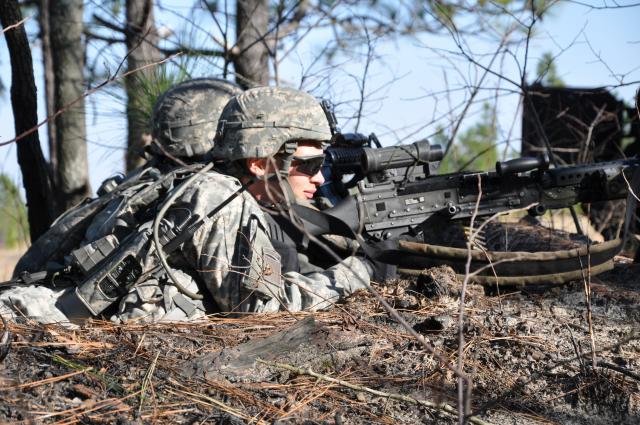The U.S. Army is planning to demonstrate the ability of wideband waveforms such as Soldier Radio Waveform, or SRW, and Wideband Networking Waveform, known as WNW, to move voice, video, data and images faster, further and more efficiently than legacy waveforms across the battlefield through ad hoc mobile networking, service officials said.
“The non-proprietary waveforms, SRW and WNW, will provide the backbone of terrestrial connectivity for several units conducting operations during the Network Integration Evaluation this summer at White Sands Missile Range, N.M. The waveforms will have to operate over variable desert and mountainous terrain and perform during diverse mission scenarios requiring mobile ad hoc connectivity,” said Paul Mehney, spokesman for Program Executive Office – Integration.
Both WNW and SRW are designed to be mobile ad hoc in nature, in that they don’t require a lot of pre-planning for nodes to join and leave the network, said Navy Capt. Jeff Hoyle, program manager for the Joint Tactical Radio Systems, or JTRS Network Enterprise Domain. “SRW and WNW work very well in providing connectivity for dispersed forces.”
Both SRW and WNW, which have the ability to draw from a larger portion of the available spectrum to transmit and network information, have the ability to seamlessly route and retransmit information, Hoyle explained.
“The thing that is most important for throughput is the bandwidth that is available in the spectrum. The spectrum is a very finite resource and the amount of bandwidth that is available will directly correlate to the amount of throughput that the network can support,” Hoyle said.
SRW is designed to efficiently use spectrum in 1.2 Megahertz bandwidth allotments, Hoyle said.
WNW can also support 1.2 Megahertz allotments, but it operates more efficiently and effectively at 3 or 5-Megahertz bandwidth allotments (up to 30 Megahertz when available) to deliver even higher network capacity, he added.
“The waveforms are designed to find the best path for delivering a particular message, maintaining a continually up-to-date understanding of network-node locations, so they can always determine the best path,” Hoyle said. “The power of the network is enhanced by increasing the number of nodes on the network.”
SRW is targeted for the individual Soldier and individual small units and sensors such as the Small Unmanned Ground Vehicle.
“SRW is focused on delivering a network capability to those users that have tight size, weight and power requirements. It packs a lot of networking into a very small package and allows that to be integrated into hand-held radios, small hockey-puck sized radios and very small sensors such as unattended ground or air vehicles,” Hoyle said.
JTRS Rifleman Radio and the Handheld Manpack Small Form Fit, or HMS, radios for the dismounted units use SRW to deliver networking capability embedded into radios Soldiers can carry with them for voice, video and data capability, he added.
The idea is to share battle-relevant information across the force in real time, Hoyle explained.
“A recently completed 82nd Airborne Network Excursion at Fort Bragg, N.C., used SRW on Manpack radios and the Rifleman Radios to maintain situational awareness for troops as they parachuted in. As they accomplished the mission, they were able to leverage the connectivity back to their support aircraft. For those soldiers who had simulated casualties they were able to share the information and photos of the casualties with the Medevac (medical evacuation) units,” he said.
WNW is primarily intended to provide the backbone network connectivity between ground and air vehicles, he said.
“It provides a lot of throughput capacity and has a lot of features and algorithms built into it because you have the size, weight and power infrastructure of the vehicles,” said Hoyle.
The Army, through a strategy referred to as the JTRS Enterprise Business Model, is seeking to develop these high-bandwidth waveforms through official programs of record and commercial off-the-shelf products which are also integrating the SRW and WNW waveforms.
“The idea is to accelerate competition into the defense radio business and focus on the delivery of the waveform capability so any vendor that is able to can integrate the waveforms and can satisfy the services’ networking capability needs,” Hoyle said.










